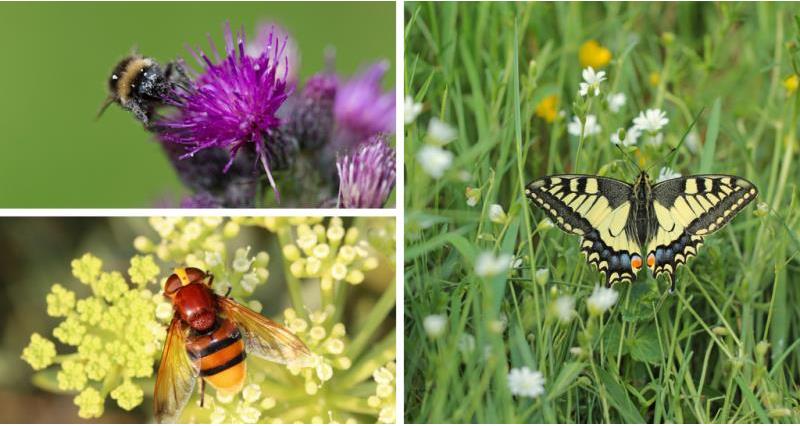What is pollination and why is it important?
Pollination is a crucial part of growing the fruit and crops we eat. A third of the total volume of the world’s agricultural produce, from fruit to coffee beans, relies on pollination.
Pollination is the process of fertilisation, in order to produce the next generation of plants. Wind and water play a part in transferring pollen, but about 75% of crop plants require pollination by insects and animals. And bees are some of our most important pollinators.
Insects such as bees and butterflies visit flowers to feed on nectar and pollen. As they move about, and from plant to plant, sticky pollen gets transferred from their bodies and wings. The transfer of pollen in and between flowers of the same species is what leads to fertilisation – ensuring that the plant can produce seeds and fruit.
What are farmers doing to encourage and protect pollinators?
In Britain we have more than 1,500 species of pollinating insects, including bees, wasps, flies, beetles, butterflies and moths. They are so important to food production and our ecosystem that the UK government has set out a National Pollinator Strategy – a 10 year plan to help make sure these insects survive and thrive.
Farmers and land managers across the UK work hard to encourage pollinators and to provide them with habitat and food. This includes sowing areas of land with wildflowers and maintaining hedgerows. Farmers have planted around 10,000 football pitches worth of flower habitat across the country to support a healthy bee population.
How do bees help with food production?
Meet the farmer - Emily Cliff
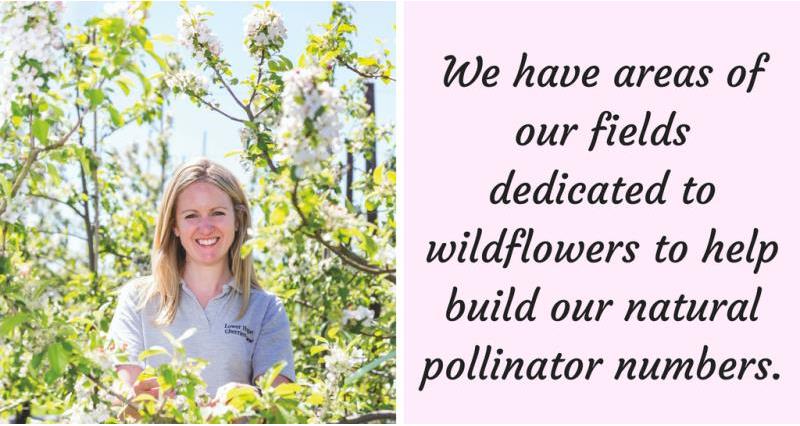
Emily Cliff runs the fruit operation at Lower Hope Farms in Herefordshire, which produces cherries, raspberries and apples. The farm has 36 hectares of cherry trees. Each hectare, which is about the size of a rugby pitch, is planted with up to 2,000 trees and the farm can produce almost 500 tonnes of cherries a year, which it supplies to supermarkets including Sainsbury’s, M&S, Waitrose, Tesco, Aldi and Lidl.
Cherries can be a difficult crop to grow. The weather is an important factor but so is the amount of pollinating insects, which are required to help the trees produce fruit after the blossom season.
“We have a beekeeper who brings more than 100 honeybee hives onto the farm every year,” Emily explains. “We supplement this with bumblebees – we have a lot of naturally occurring bumblebees on the farm – as well as solitary bees. There are millions of flowers out simultaneously and they need to be pollinated in a short time, so the honeybees provide the extra bee power.”
Emily and her team have planted a number of wildflower areas to encourage bees and other pollinators to stay on the farm after cherry blossom season.
“When our cherry blossom is out we are providing a very short, sharp burst of food for a lot of these insects,” she says. “Then this drops off, so by having wild flowers that come out later than the blossom – and throughout the summer – the insects still have a food source. This will help us to build our natural pollinator numbers.
“We’ve planted nectar-rich mixes with flowers such cosmos, harebells and buttercups, and then there will also be plants to attract birds, too.”
How can wildflowers help create habitats?
Meet the farmer - Mike Kettlewell
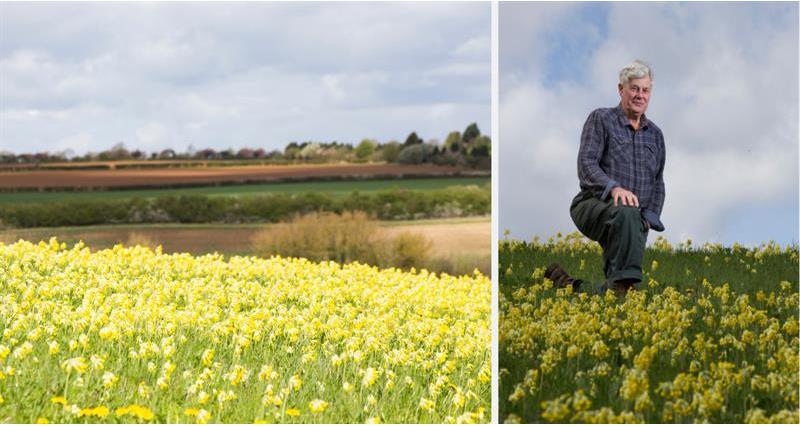
Mike Kettlewell has a mixed farm in Over Norton, Oxfordshire. The farm is in a Higher Level Stewardship scheme and one of his main focuses is maintaining wildflower meadows to encourage pollinators and other wildlife.
Wildflowers cover about 70 acres on the farm, offering plenty of choice for pollinating insects, including a rare butterfly that seems to have made itself at home.
“We think we have a small breeding colony of purple emperors,” Mike says. “Two years ago, my wife, Sarah, photographed a moribund male on a footpath and last summer we saw a female in our buddleia. We have lots of salix, which they breed on, and oak trees which they fly around, so we have the perfect environment.”
Working in partnership with nature
Meet the farmer - David Long
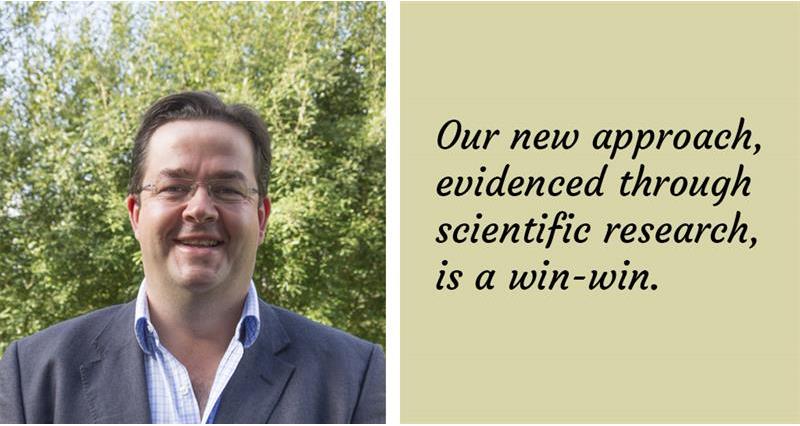
David Long has a mixed farm near Rochester, South East England. The farm’s main focus is growing pears, strawberries and apricots, but they also grow cereals such as wheat, barley and oilseed rape, and have a flock of Romney sheep – native to Kent. David’s family have farmed here since 1909 and he is a fifth generation farmer.
Keen to improve efficiency on the farm while reducing inputs, David got involved with a horticultural and environmental sciences research centre to help him when he discovered insecticides were not working in the orchards. The research showed that the need for insecticides could be reduced by increasing biodiversity in the orchards through wildflower planting and zero mowing.
This change in farm management practices, saw improved production, increased wildlife and reduced input costs. “Our new approach, evidenced through scientific research, is a win-win” explains David.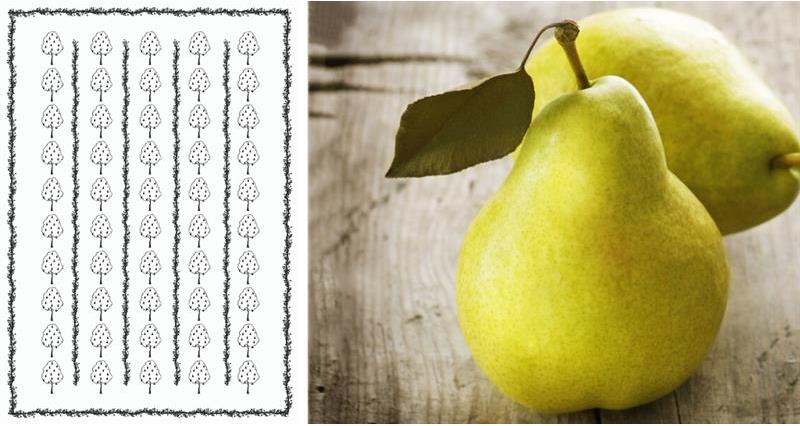
Image of a typical pear orchard on David's farm
The image above shows a typical pear orchard on David’s farm: enclosed by hedges and bordered by a biodiverse wildflower strip. The wildflower strips also extend amongst the fruit trees making the orchards a haven for pollinators and plant species.
“We leave areas rough and don’t mow where it isn’t needed” said David, “this has been a real psychological shift as before I felt pressure for everywhere to be as pristine as the Wimbledon lawn!”
This approach extends to the arable headlands and awkward corners of the land which are planted with wildflowers, creating great benefits to pollination. The wildflowers across the farm have also been positively received by local residents. The village population of around 100 residents can double as up to 100 people may be employed at times. David is passionate about giving back to the local community and strives to be a responsible neighbour, recognising that his business can cause disruption at times.
David's farm is pioneering the way to integrate farming and the environment - striving to maximise productivity in conjunction with increasing on-farm biodiversity.
Meet the farmer - Peter Shallcross
NFU South Wiltshire chairman, Peter Shallcross, has been farming in Wiltshire since 1995, starting with 300 outdoor pigs on a rented farm before coming home to the family farm that extends to 900 acres with a dairy focus.
Situated in the Nadder Valley, within the Cranborne Chase Area of Outstanding Natural Beauty, Peter's farm hosts a variety of soil types lending themselves to grass growth and some arable crops.
Wildlife
Peter's farm is a part of several Countryside Stewardship (CS) schemes and is also part of an Environmental Land Management (ELMs) test and trial pilot, which help farmers to protect and improve the natural environment.
Peter says: “As part of the CS scheme, the farm boasts a host of wildlife-friendly aspects, including flower and grass margins, beetle banks, rare arable plant margins, hedgerows, and flower meadows along with supplementary feeding for birds, nectar and pollen mixes."
Peter's efforts to cater for wildlife have certainly paid off, with several pairs of lapwings nesting in the ground-nesting bird plot. Peter has also established a dew pond which has provided water to an otherwise dry area, meaning frogs, yellow wagtails and reed buntings now make a regular appearance.

Having a keen interest in butterflies, Peter joined with a group of like-minded people to introduce Dutch elm disease-resistant elm trees back to the landscape, a vital food source for the white-letter hairstreak butterfly. This species declined dramatically in the 1970s when its food plants were reduced by Dutch elm disease, but with work from these groups and individuals, is now recovering in several areas. Peter's farm also welcomes other species of butterfly including the common blue butterfly and small tortoiseshell butterfly.

